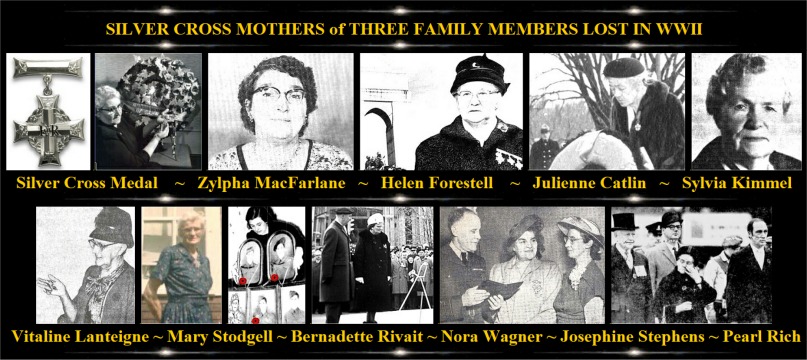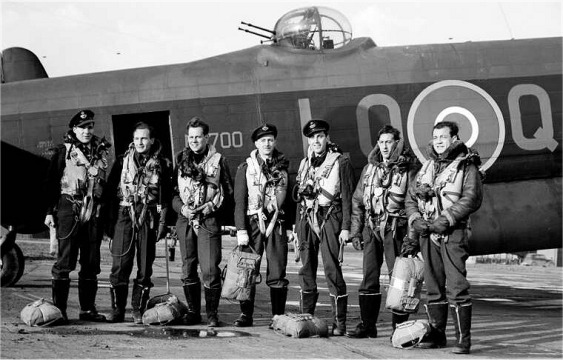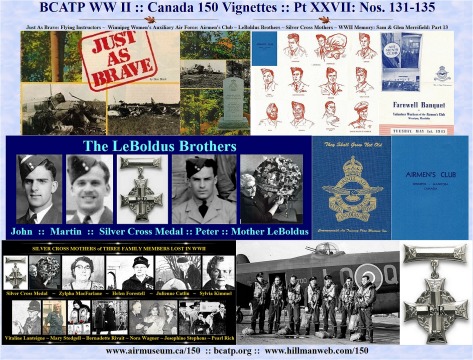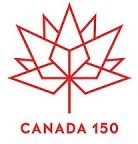Strapped to the rear seat of bright yellow Harvard
3209, pilot instructor John Sweet felt like the number two man on a horse:
He was aboard, but for the moment control was in the hands of student pilot
Ken Child up front.
It was January, 1944, and the two were returning to base
at Aylmer after a day spent with other trainees flying target practice
over the flat, snow- covered farmland of southwestern Ontario. Unknown
to either airman, disaster was about to strike.
"We were four to five miles from base and went into a
dive to drop to 1,000 feet, and I remember looking over to my right and
seeing (Harvard) FE662 trying to fly formation," Sweet recalls. "I don't
know why he did that, but there we were 30 feet apart and low on fuel."
Seconds later, the other plane disappeared, "but as we turned into the
wind on our landing approach, he came out of the blue and went through
our wing. All that remained was three-quarters of a wing. We were upside
down."
British student pilot Peter Stratton was decapitated as
FE662 slammed nose first into the airfield 750 feet below. His Canadian
instructor, Reg Scevoir, had the flesh ripped from his face and required
extensive reconstructive surgery. The Harvard's 575 h.p. engine drove into
the frozen ground as the rest of the plane ripped free and landed 50 yards
away.
Still upside down, 3209 was losing altitude. Rescuers
ran to what remained of FE662, while others watched in horror, then
relief, as Sweet fought with the controls and righted his aircraft. "I
don't know what went through my mind," recalls the former instructor, now
70. "For the longest time, I had trouble remembering anything after or
before the crash."
When 3209 came down in a field behind a hangar it was
doing 200 m.p.h. Normal approach speed is 110. "We lost our right wheel
and headed toward the road," Sweet recalls. "I couldn't make the runway.
Nothing was said. It happened so fast."
Ripping up chunks of earth and grass, 3209 punched through
a road fence, taking out eight posts before hitting the first ditch where
it lost the left wheel. After skidding across the ·road, the nose
of the plane slammed into the next ditch, before taking out another fence
and sliding 80 feet into a field. Fortunately, the Harvard's fuel tanks,
located near the rear seat, were almost empty. Sweet was pulled unconscious
from the burning wreck with a rope tied to a crash truck boom. He had a
broken arm, broken left leg and a gaping hole in the front of his skull.
His hospital treatment would last a year and include psychiatric examination.
Ken Child came away with a broken left arm.
''A person can ask me today if being an instructor in
Canada during the war was dangerous," Sweet says. "You bet it was." All
volunteers who had freely offered their lives to serve Canada during WW
II, most, if not all of the men who served at No. 14 Service Flying Training
School under the wartime British Commonwealth Air Training Plan (BCATP),
wanted to go overseas. Sweet himself enlisted in 1942, and before advanced
training at Aylmer passed through Manning Pool No. 1 in Toronto, initial
training school and elementary flying training school on Tiger Moths, in
Oshawa.
After receiving his wings in Aylmer, Sweet could have
gone to Bagotville, Que., and then overseas. Instead, he was assigned to
Trenton, Ont., for pilot instructor training. "Once you went to Trenton,
you were stuck," he says. "There was no way out.
You were going to be an instructor." Sweet recalls a lot
of men purposely gave the wrong answers on their written instructor's tests,
hoping they'd fail and be reassigned overseas. "But the teachers at Trenton
were wise to this. They knew who was trying to fail. They knew the guys
had the right answers in their heads, if not on paper."
The service flying training school was the student's introduction
to heavy, high performance WW II aircraft-in particular the Harvard, and
adds Sweet, those in his charge weren't all choirboys. "You'd have to knock
the overconfidence out of them during the first month, “he says." It took
the next month to teach them about flying, and in that month they learned
so much they were scared to fly in the third month. Sometimes you'd have
to go looking for them."
Instructors prepared students for the worst conditions,
allowing them to learn from potentially fatal mistakes. The risk was understood.
Says Harry Saelens of the Tillsonburg, Ont., Branch: "It doesn't matter
whether you're pranging in a Tiger Moth over Neepawa or in a Halifax over
Berlin, you're just as dead." Mute evidence of the truth of that
statement was found in the small cemeteries that dotted the countryside.
Canada only servicemen would eventually comprise 10 per cent of the 44,000
Canadians killed in WW II. "These young fellows were just as loyal just
as courageous, just as young and just as prepared to go and do those big
and glorious deeds as those who got to do them, but they never got the
chance and they got none of the rewards. Nobody ever talks about them any
more and I think they should," says Saelens.
Pilots and instructors weren't the only ones at risk.
John French, 67, of Langton, Ont., was an airframe mechanic based in Yorkton,
Sask. He recalls one close call while flying as a passenger in a Cessna.
"It started to snow heavily and we got down to 50 to 60 feet off the ground
to spot the lights of a town or village . The pilot followed a railway
line, figuring we'd come across a grain elevator with the name of the town
on it. We spotted an elevator, but while making a pass we barely missed
a water tower. We felt awfully lucky."
Before moving to Kingston, Ont., in August 1944 -- where
it operated for another year -- No. 14 Service Flying Training School enjoyed
three productive years at Aylmer with 4,144 pilots earning their wings.
The school had an excellent safety record considering the high-pressure
training.
But by 1944, there were up to 500 landings a day and accidents
were inevitable. During its four years of operations, including the time
in Kingston, 26 fatal crashes killed 12 instructors and 26 students.
Overseas, a tour of operations called for 300 hours flying
before a leave was granted. "Back here in Canada," says Sweet, "an instructor
would have close to 2,000 hours. He'd be flying the seat of his pants off
to keep his students up on their time."
The diary from No. 14 describes forced landings, nose-ups,
ground loops, bent air screws, collisions with trees and even a Harvard's
run-in with an outhouse. "A dense ground fog closed in with 13 aircraft
away from the field," notes a booklet by M.L. Mcintyre. "One found its
way back, 10 landed at London, one was forced down near London and one
force-landed near some cottages at Port Bruce on Lake Erie.
The plane was undamaged, but in the attempt to fly out,
an instructor had the misfortune to hit an outhouse on his takeoff run.
Luckily the outhouse was unoccupied and its damage appears to have been
slight.
With planes buzzing overhead-some occasionally crashing
in farmer's fields the war arrived in Aylmer as it did in other towns with
a training base. Newspaper accounts tell of practice bombs crashing
through greenhouses and bullets dropping from the sky. A March i7, 1943,
story in the St. Thomas Times-Journal describes how Mrs. A.S. Taylor, of
Port Stanley, had a narrow escape when a .303 bullet tore through the roof
of her kitchen, grazed her left arm below the elbow and then bounced onto
a breakfast plate.
But despite narrow escapes for civilians and military
personnel, communities were proud of their training bases. Students and
instructors were invited into private homes for Thanksgiving dinner
and other celebrations.
Romances blossomed and the towns' economies grew. It was
a sad day when a base closed. "No. 14 brought the war very close to home,"
says Aylmer high school history teacher Kirk Barons. "It made the war very
real for this community and if you compare the small number of fatal accidents
that happened in this area last year to the number that occurred back then,
you can recognize the element of danger that existed.''
Former flying instructor Archie Londry, 66, a service
officer with Gen. Hugh Dyer Branch in Minnedosa, Man., recalls working
on a broken radio receiver in the back of an Anson one night. About 30
miles from Brandon and at an altitude of 3,000 feet they ran into a severe
ice storm with lightning. The starboard engine kicked out. ''We had to
maintain our flying speed to avoid a complete stall," recalls Londry, who
took control of the training aircraft.
The lightning helped Londry spot a small slough, which
cushioned the plane before it crashed into a bush, losing its wings. There
were no injuries, but the crash marked one of many close calls for
the instructor, whose room-mate, also an instructor, died in a mid-air
collision between two Cessna Cranes. "The students didn't learn by you
telling them the mistakes," he says. "You had to go as far as you could
go and let them make and see the mistake and then show them how to recover.
It was a necessary part of training and it's how the majority of
accidents happened."
Saelens says that, as host of the BCATP, Canada trained
125,000 men from all over the Commonwealth, including 50,000 pilots. During
the five years it operated, more than 800 trainees died. "In my army
service I never knew of anyone being killed, but it did happen," he says.
"Navy men drowned during training, but the largest losses were suffered
by the air force .''
"People are just beginning to realize what the training
casualties were," adds Londry. "Forty five years ago people didn't talk
about it because they were preoccupied with the war effort. But the sacrifices
were made here as well as overseas. From my graduating class alone, about
the same number of graduates died in Canada-only service as those
who died overseas.''
132
of 150: Winnipeg Women's Auxiliary Air Force - Airmen's Club
"What did we do for them? Found
homes with kind people. Soon their longing for home faded away only to
return when they were on their way home. Many boys who failed as Pilots,
had to be comforted. We sewed stripes and wings on by the hundreds, darned
sox, mended uniforms. Listened to their love stories, looked at hundreds
of photographs of their wives, babies and sweethearts, and we loved it
all. Many times our laughter was very close to tears. We were like a big
family, our own Canadian boys and others from all over the world.'"
The Airman’s Club booklet featured in this Vignette
was produced for volunteers, friends and airmen and airwomen at the end
of World War II as a memento of the club which was soon to be closed. It
was one of many programs offered by the Winnipeg Women’s Auxiliary Air
Force, a determined group of voluteers making a difference for thousands
of civilians and service personnel wrapped up in the war. It is a remarkable
story which chronicles how amazingly far people were willing to go to help
others during `this darkest hour.’
AIRMEN'S CLUB ~ 1941 to 1945
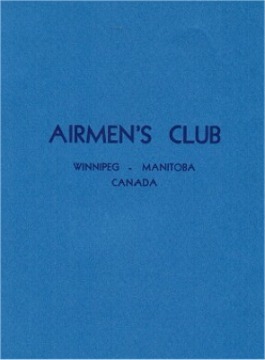
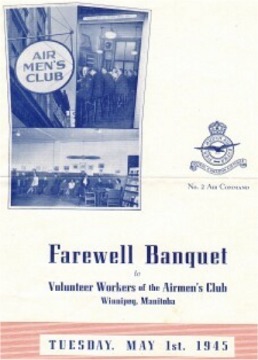
WITH THE OPENING of the Empire Air Training Stations in the
vicinity of Winnipeg, and the arrival of so many young Airmen from Overseas
it was soon obvious that some place should be available for these boys
to meet and make friends with us. And so, the Airmen's Club opened January
18th, 1941.
THE OBJECT OF THE CLUB was not only to have a meeting
place and a small Snack Bar, but more important to place these boys in
private homes for their "Leave." In this way they would become acquainted
with Canadian Life, and at the same time have pleasant homey surroundings
for their furlough.
The response to our appeal for people who would like to
entertain these young men in their homes was overwhelming. The boys were
from all over the world, of many races and creeds, and, without exception,
they were all entertained in private homes. In the past four years 39,732
have been placed.
All work in connection with the Club was voluntary, members
of the Winnipeg Women's Air Force Auxiliary comprised our personnel.
Shortly after we opened, the U.T. (under training} Pilots,
for the first Royal Air Force Station to open in this Command, viz., Carberry,
arrived. The Ground Crew for this station having arrived in early December,
1940.
Who will ever forget that morning, forty below zero! But
the boys said the warmth of our welcome soon made them forget the cold
weather. Many of us had the pleasure of entertaining these boys in
our homes for Christmas and New Year's Leave and, although the Club was
not open we had already started what was later to be called the "Placement
Desk."
The first Australians and New Zealanders arrived in February,
1941. They were met at the railway station by the Auxiliary's Station Reception
Committee, and brought by bus to the Club, where they were served light
refreshments before they proceeded to their Station. We will always remember
these boys, and the Maoris who came with the New Zealanders.
Boys still kept arriving from Overseas but in the early
spring came many from the United States. At one time we thought of the
United States as "Texas" as so many American boys seemed to come from there.
However, by early summer, boys from every State in the Union were arriving
to enlist in the Royal Canadian Air Force, and some 700 registered at the
Club.
Those boys from Texas who will ever forget them? "Tex"
from Odessa, "E.L." from Houston, Johnny who hitch-hiked 1,500 miles from
Childress, and others too numerous to mention. We placed many of these
boys in private homes, until they were taken into the Air Force and
were posted. We have many letters from these boys, who, shortly after Pearl
Harbour transferred to the United States Air Corps. It was these delightful
Texans who suggested that the Snack Bar should provide something
a little more substantial than sandwiches. And the fact that we were having
more boys every day, led to us enlarging the Club. Three more rooms were
added, including a much needed Canteen.
About this time, we began to notice the names of different
countries on the shoulder badges worn. Young men from all over the world-France,
Belgium, Poland, Czechoslovakia, Holland and Denmark, many of these boys
having escaped from occupied territory. We tried to place them with
people from their homeland, and in some small measure bring comfort to
these boys, who in many instances did not know what had happened to their
dear ones.
Boys from British Honduras, British Guiana, Trinidad,
Barbados, Jamaica and the Bahamas, also arrived about this time, as well
as several South Africans. The insignia B.L.A.V. on shoulder badges puzzled
us for a time, but on inquiry we found these boys came from South America.
It meant "British Latin America Volunteer" and was worn by those from the
Argentine, Brazil, Bolivia, Columbia and Paraguay. Some of the boys were
native to those countries, but the majority were British.
Our Club had indeed become cosmopolitan, Canadians rubbing
shoulders with boys from all over the world. We had thirteen boys who came
direct to Canada from Singapore, among them was a Chinese boy named Tan
Kai Hai. According to the "London Times" he was the first Chinese Pilot
in the Royal Air Force, of the others nine were Englishmen, two Danes,
and Tullah, a native of Johore.
Our boys from India: The first one we had was David who
was with the R.A.F. but later there were the boys of the Royal India Air
Force. Our most picturesque guest from India, with his airforce blue puggree
or turban, his short black beard, and about six feet tall, was nineteen-year-old
Sandhu of Pakho Pur. Sandhu was a Sikh. The darling of our hearts was Gopi
from Tranvencour, southern India, who was with us so long at Deer Lodge
Hospital, having had a very bad crash which necessitated many operations.
Gopi received his wings a short time ago, and once again our prayers were
answered.
Among the Maoris was "Snow" whose real name was Kereama,
of Marton, New Zealand. Many of these Maoris had beautiful voices, and
we volunteers will never forget the evening we listened to Maori songs,
sung in the Canteen by three of these boys.
There are many stories to be told, some full of humour
and others full of pathos. The very young boys homesick, and finding everything
strange in our Country. What did we do for them? Found homes with kind
people. Soon their longing for home faded away only to return when they
were on their way home. Many boys who failed as Pilots, had to be comforted.
We sewed stripes and wings on by the hundreds, darned sox, mended uniforms,
listened to their love stories, looked at hundreds of photographs of their
wives, babies and sweethearts, and we loved it all. Many times our laughter
was very close to tears. We were like a big family, our own Canadian boys
and others from all over the world.
How did we entertain our big family? Always they were
encouraged to accept the hospitality of private homes. Concerts and dances
were given at the Club, where the Junior Hostesses from the Auxiliary helped
to entertain. Parties were given for newly arrived trainees, who were to
be stationed in and around Winnipeg, for boys who were passing through
and would be here only a few hours, and there was the night we entertained
289 Sergeant Pilots, of the Royal Australian Air Force, and Gracie Fields
sang to them after her concert at the Auditorium, coming from there with
His Honour, the Lieutenant Governor and Mrs. McWilliams. That was a gala
night for all of us. We volunteers enjoyed the parties as much as the guests.
Our first Christmas party in the big lounge is a happy
memory. Christmas dinner was served to over 200 boys from all over the
world, meetings of old school friends and friends, they had left behind
in England. The boys were all very interested in our guests from Singapore,
especially the Australians and New Zealanders, as many had hopes of
being sent to the Far East, and especially to Singapore, where countless
numbers of their countrymen were stationed during 1941.
The busiest place in the Club was the Canteen. We had
seating capacity for twenty-four. Breakfast, dinner and supper were served.
During the week we averaged around 200 meals a day but on week-ends,
which began on Friday, when trainees as well as Station Staff arrived on
Leave, we served anywhere from twelve to fifteen hundred. Bacon and eggs
were in great demand and thirty to forty dozen eggs cooked in an evening
soon became routine. How the volunteers in the Canteen did this, no one
will ever know, but it was done, and on a four ring gas stove with oven.
Finally, the Winnipeg Electric Company took pity on us, and built us a
six ring stove. And a kind friend gave us a steam table. Then we went to
town! No request of the boys, were they Canadian, American or from
across the Sea, was too much trouble for the volunteers who cooked for
them. 596,879 boys were served in the Canteen during the last four years.
We were the first Airmen's Club in Canada. All work was
done voluntarily and we all had the same idea in our minds, to make this
a home from home, and not just a Canteen. The boys watched us do the cooking
as they had watched their Mothers in their own homes. They helped us wash
dishes, peel potatoes, and in fact did everything but the cooking. Indeed
many the bowl and spoon were licked after the cake was iced.
The expenses of the Club were not carried by the Canteen.
When, by any chance we were on the right side of the ledger, we had
chicken or turkey for Sunday dinner. Never did we hear the song "A Wing
and a Prayer" without thinking of our Club. We had many interested friends,
and they always seemed to be on our doorstep when anything was needed.
Our donations every year exceeded our losses.
Not many people know that the Airmen's Club of Winnipeg
is called by the boys far and wide as the "World's Most Famous Club." And
perhaps with good reason, for our boys are all over the world. Letters
and messages come from Canadians, who have never been in the Club (but
who come from in and around Winnipeg) and they tell of meeting Indian boys
in India who speak to them of the Airmen's Club, Australians and New Zealanders
who meet our boys in Italy and the middle East who speak of us. It would
not surprise us at all to learn someday, that we were known by the underground
of all occupied countries in Europe.
Our volunteers, be it Placement, Canteen or Housework,
gave many hours of untiring service. Many of the Canteen shifts are still
working together in 1945. We do not need thanks. The hundreds of letters
from our boys are enough. One, received from David Kumar (Viiendra Kumar)
our first Indian Airman expresses the finest thanks which could be given:
"Believe me, a club like yours does more to bring International
Friendship together than all the Leagues of Nations in the world."
This outline of the activities of the Airmen's Club is
prepared as a souvenir for all those, whose work made the Club possible.
Chairman ~ Winnipeg, Manitoba ~ April 30th, 1945.
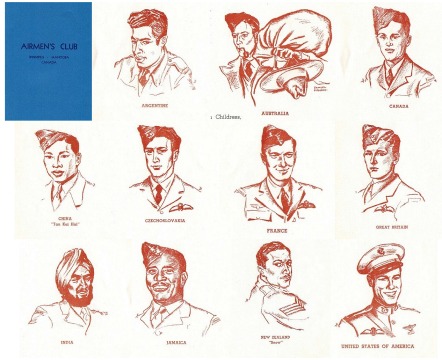
Click for full size
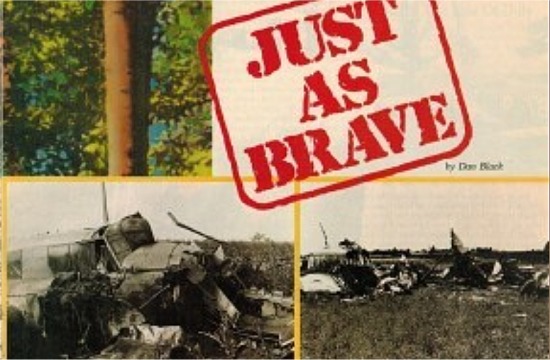
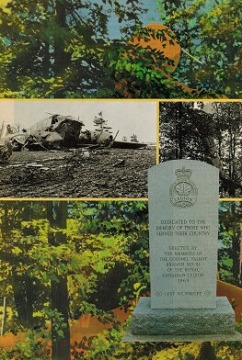



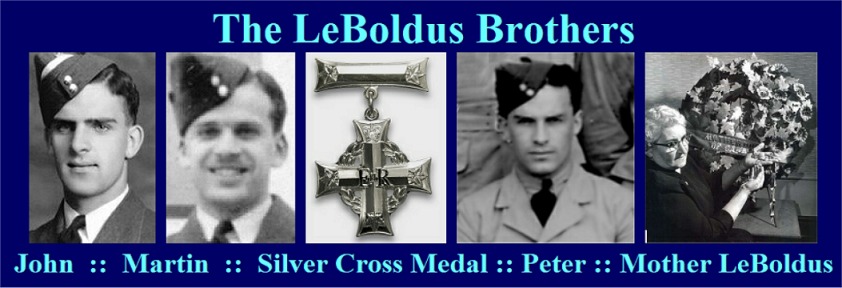
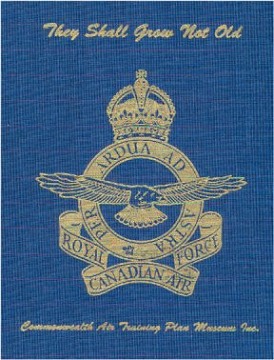 Official
RCAF reports, as documented in the Commonwealth Air Training Museum
memorial book, "They Shall Grow Not Old" can be seen on the left. Additional
information about each of the brothers can be seen below.
Official
RCAF reports, as documented in the Commonwealth Air Training Museum
memorial book, "They Shall Grow Not Old" can be seen on the left. Additional
information about each of the brothers can be seen below.
